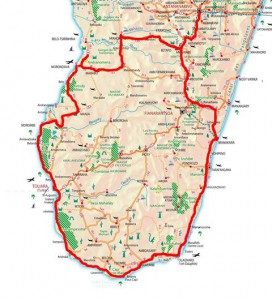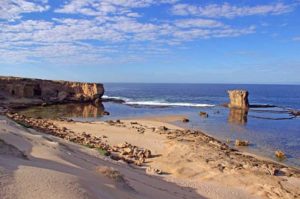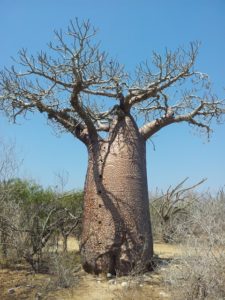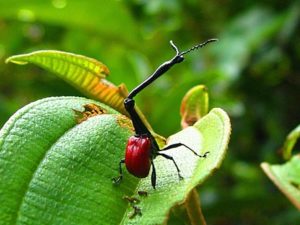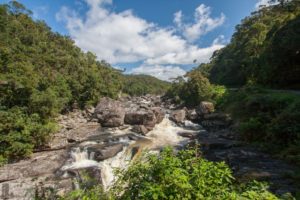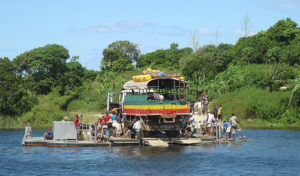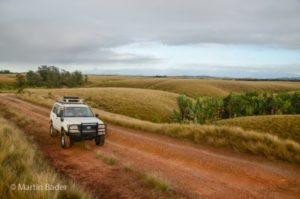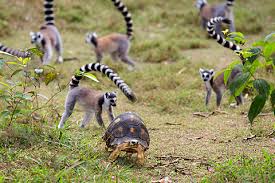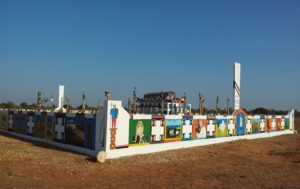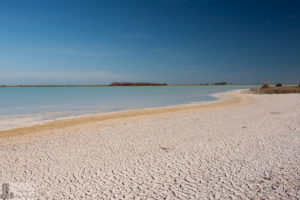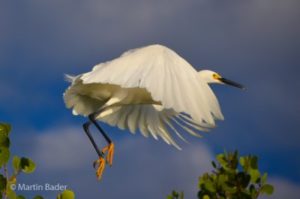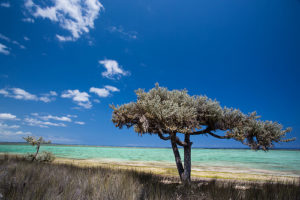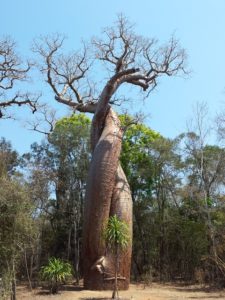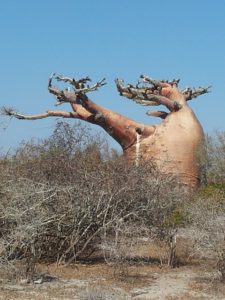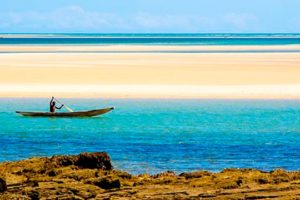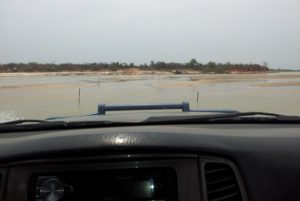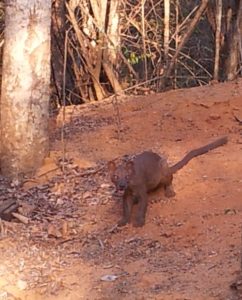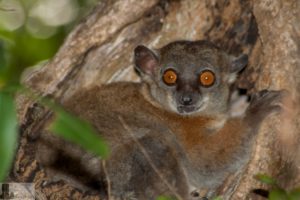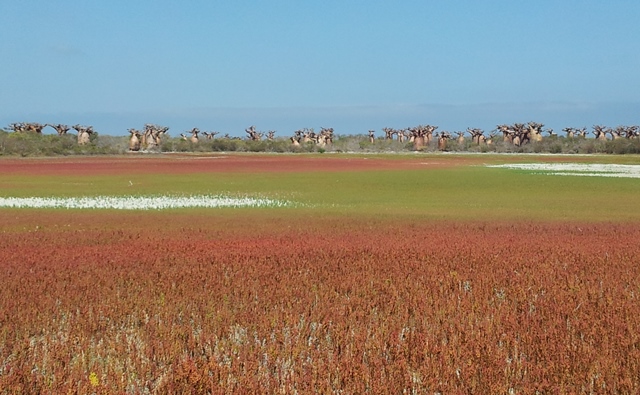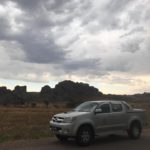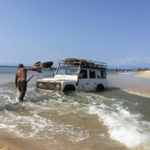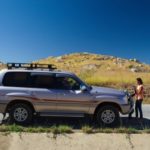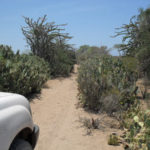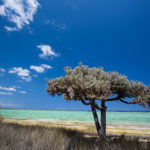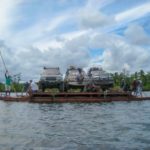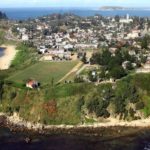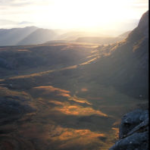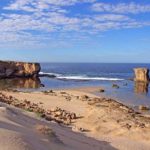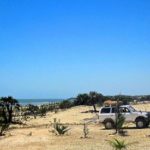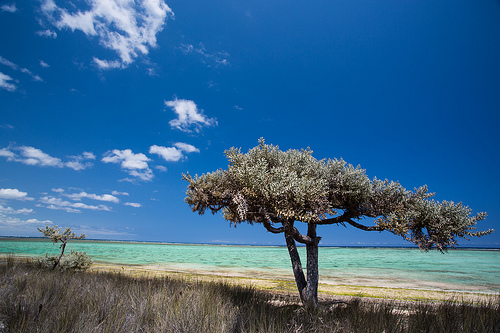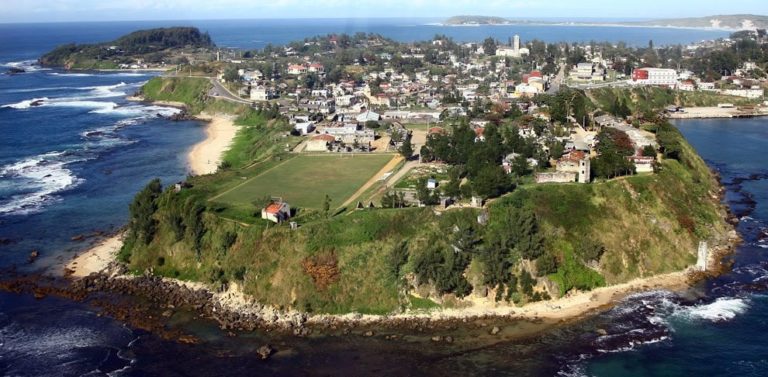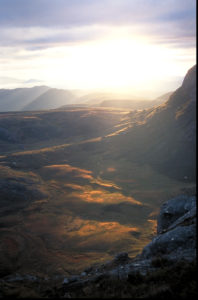Experience with us the Terra Incognita in Madagascar - The splendor of the slopes
24 days trip
A unique journey from Tana along the East Coast, through the deep south until the wild Vests. A Special trip for guests who Contacts with the population and above all a merging with the unique nature search. With a certain amount of effort and effort, we enable them to access the most unusual landscapes and most different climates that Madagascar has to offer.
Travel dates: Mid-May to mid-November possible at any time on individual request
You are looking for a Trip to Madagascar, which in terms of Individuality and Experience factor is unparalleled? Within the framework of a single trip a large part of the "Terra Incognita" to discover and experience?
This is now possible for the first time with the trip offered here.
In most cases, trips to Madagascar are oriented along the east coast, south or west coast. This is the only trip we offer that combines all of these locations in a single and therefore extremely challenging trip. It will be almost the Half of the island circumnavigated. With a very experienced driver, Toyota Landcruiser specially prepared for difficult slopes and our personal accompaniment no wishes remain open.
The whole southern half of the huge island is offered here in one trip, the tour consists of three parts which are described here in detail.
Part 1: Towards "Terra Incognita
The journey begins in the capital Antananarivo and leads you first on the N7 towards south/east, it divides into three very different sections:
The Highlands and the East Coast, the Land of the thorn people and finally the Baobab Tour along the West Coast Mozambique Channel.
From Antananarivo for the first time, we will travel along a rather classic part of the usual travel routes to Antsirabe, Ranomafana N.P. and Manakara.
At the Ost coast, from Manakara, Farafangana and Vaingandrano, the itinerary takes you over partly difficult tracks and 10 ferries for the river crossings to the deep and hot south. There you can spend a few days in Fort Dauphin relax before the 2nd part of the tour begins:
Part 2: The land of the thorn people.
This part of the trip will surely leave unforgettable impressions on them: Infinite expanses, bizarre and unique thorn forests in the most diverse forms and a huge labyrinth of sandy trackswhich runs through this almost deserted area. At the southernmost tip of Madagascar, Cap Saint Marie, until Lavanono about 30 km northwest of it, is the habitat of the beautiful Radiated tortoises. You can still find them there in large numbers and also the stately size of some specimens is a rarity.
Part 3: The Baobab Tour
From Tulear it goes through sparsely populated Thorny Woods, Dideraceae and Baobab landscape along the Mozambique channel to the north. Nowhere in Madagascar and probably nowhere in the world can you see so many baobab species in different, gigantic and bizarre shapes as in this area. Seven of the 8 species of baobabs that exist in the world grow here.
After this tour, where hundreds of these giants can be admired and photographed daily without any crowds, the world famous Baobab avenue in Morondava become almost inconspicuous. This highlight is nevertheless on the program when the Kirindy N.P. is visited.
This trip can be booked individually but it can also be a group trip on fixed dates. Three to four guests maximum per off-road vehicle. If offered on fixed dates the trip will definitely take place, up to 12 guests can book independently on this itinerary and the above mentioned trip dates. The respective number of fixed bookings will be updated when new guests join. The price for all participants will be cheaper if there are more guests on the trip.
This trip is only feasible during the dry season in mid-May and mid-November. Long drives in difficult terrain, partly uncomfortable accommodations or mediocre restaurants have to be accepted in this part and on such a tour often the unexpected invites itself, which could make short-term changes in the rice course necessary. There are a total of 11 river crossings by ferry and some by car through more or less deep water.
A good physical condition is necessary despite very little physical effort. The tour is mostly away from populated areas.
It is the most beautiful and by far the most diverse trip you can imagine in Madagascar. The created tour was tested, organized and made possible by us with German thoroughness.
Connection tours to the Tsingy from Bemaraha or along the RN7, as well as a division of the overall tour into individual sections are possible and can be individually requested and planned.
Day 1 Arrival in Antananarivo
After completing the visa formalities, you will be picked up by one of our guides or by us directly at the airport. Depending on the arrival time you will then either be transferred to the "Villa Sibyl" to enjoy the well-deserved rest, or various activities are offered if time permits.
Day 2 Antananarivo-Antsirabe
We take the winding road through the bustling suburbs of Tana through the highlands before we arrive in Behenjy or Ambatolampy rest for lunch.
Antsirabe is located 170km south of AntananarivoThis large city is an important economic center and is famous for its pleasant mountain climate and healing springs. Founded in the 19th century by Norwegian missionaries, Antsirabe is clearly more "European" than other cities in Madagascar. magnificent colonial mansions and the regular building testify.
In the garden of the hotel there are countless chameleons all hidden on the trees and some Radiated tortoises which can often be observed on a small island in the middle of the lake.
Overnight stay in hotel "Chambres du Voyageur“
Day 3 Antsirabe-Ranomafana
We leave Antsirabe and the road continues to wind until we leave the highlands.
After that the landscape changes again in a very exciting way, you see lush vegetation with trees, tree ferns and a gigantic waterfall in rainforest, on the way to Ranomafana.
Overnight stay in hotel Grenat“
Day 4 Ranomafana N.P.-Manakara
Over more than 42,000 hectares extends the Ranomafana National Park, which was only founded in 1991 and since 2007 has been part of the UNESCO World Heritage Site is. In this park, located at an altitude of about 1300 m, you can see one of the last Mountain Cloud Forests of the earth. It is a truly unique biotope. With luck, you can see all the 12 species of lemurs, over 100 species of birds (of which 68 are endangered), insects, frogs, reptiles, see huge trees and ferns. Hikes can be made according to the desire of the participants.
Early in the morning we drive up the serpentine road to the park entrance, as the numerous lemurs and birds are most active at this time. The rainforest reveals all its magic and is filled with the calls of the forest.
Depending on fitness and interest, different circular walks can be undertaken during the morning.
Then we continue through the fascinating hilly landscape near Irondrountil we can sniff sea air after barely 3 hours in the afternoon. The typical houses on stilts lined with palm trees, indicate the proximity of the rainy east coast. In the coastal village Manakara we then see for the first time the Indian Ocean with its blue, endless expanse and its surf on the long sandy beaches of the city, invite you to dream.
A visit to the busy Manakara market offers opportunity to purchase first-class Vanilla and the very aromatic Madagascar pepper. Also other there generated Spices like Nutmeg, cinnamon, Cloves and curcuma should not be disregarded, as they are almost impossible to get in Germany in terms of price and quality.
Overnight stay in hotel "La vanilla"
Day 5 Manakara-Vaingandrano-Sandravinany
Scenically, this section, the most varied and extraordinary part of this trip. The prerequisite for mastering this stage is a very early departure. We drive the first 180 km along the east coast on a well developed and tarred road to Vangaindrano. From here about 110 km, partly very extreme track and four ferries lie ahead of us, before we reach our accommodation "Le relais du sud-est"achieve. We start right at the beginning with the most difficult part of Vangaindrano to the ferry 25 km away from Masinananaka. This two-hour and demanding drive on muddy road demand a lot from the driver and the car. After the crossing we have to drive, in another two hours, 35 km to the 2nd ferry in Manambondro, back. Here there are two possibilities to spend the night, which are not very inviting and are only used in extreme emergencies. Again, a two-hour drive leads us after the crossing to the 25 km distant Befasy to the penultimate ferry. On the other side of the river stretches a barren landscape with round hills in which only very few people are to be found. For driving through this strange area we need about two and a half hours for a distance of 25 km and leads us to the 4th and last ferry of today in Maroroybefore we start the final spurt to our accommodation. After some time, a single signpost suddenly appears in the middle of nowhere, with the inscription "Le relais de Sandravinany". We follow him. He leads us to the ocean and indeed: it is a Frenchman who is here at the Indian Ocean, far from any civilization, settled in solitude and opened a pleasant hotel. If the accommodation would be closed, continue to Manantenina.
Accommodation at Le relais du sud-est
Day 6 Sandravinany-Fort Dauphin
In the early morning, we again climb the crests of the round hills that dominate the ocean as far as the eye can see.
After breakfast we continue, for the first time to ferry N°5 in Manampanihy.
After 3km we cross the village Manantenina and then immediately continue to the ferry N°6 which is in Esama is located. After the translation to the other shore it takes another 1h20 for the 18 km to the next ferry (N° 7) in Manambato. The slope is in better condition and it is partially renewed.
Again 15km later we arrive at the ferry N°8 in Iabokoho an, also on this route there are numerous road works and detours and about an hour's drive to ferry N°9 in Vatomirindy.
After that there is another short stretch of only 9km through a very interesting landscape, much more trees and the typical vegetation of the east coast.
Ferry N°10, the last on this route but the slopes are far from over for this day. There are still about 50 km to go to Fplace Dauphin (Taolagnaro)and it takes a good 2 hours to complete this final spurt.
Before entering the city is a visit to the Nahampoana Reserve possible, it is located about 12 km from Fort Dauphin and is really a pleasant and very diverse reserve
Overnight at Lavasoa Hotel and dinner at the nearby Talinjoo Restaurant.
Day 7 Fort Dauphin-Nahampoana Reserve
Fort Dauphin is located in the deep south east of the country, crescent beaches under the beautiful mountain range where the Anosy and the St.Louis dominate. To the north, east and south the dazzle the bright azure of the Indian Ocean. The city offers visitors a variety of recreational activities such as strolling through the markets, lazing on fine sandy beaches, or exploring the sensational dry forests of the area.
We recommend the Nahampoana Nature Reserve. It is located 7 km north of Fort Dauphin and it is a small private reserve of only 67 ha. It is a very good alternative to the completely overpriced Berenty Reserve. This park has four species of lemurs among which the sifakas are the attraction of the reserve. The animals are not shy at all and can be quietly observed in a very beautiful environment. In the very well maintained gardens there is an incredible variety of vegetation from the humid east coast and at the same time Madagascar's dry flora with the triangular palms, spiny desiderata trees and gigantic bamboo shrubs. In the forest there are waterfalls and natural ponds, quiet and secluded picnic areas. You can also take a short trip with a Pirogue through the mangroves make
Overnight at Lavasoa Hotel and dinner at the nearby Talinjoo Restaurant.
Day 8 Fort Dauphin-Lavanono
Very early in the morning we leave Fort Dauphin, the tarred roads, stores, city life in the Extreme South stop and begin the 2.part of this fascinating tour. After about 70 km we cross Amboasary Sud, a larger and somewhat infamous place due to cattle rustlers. Huge sisal plantations along the road as far as the eye can see. After the bridge there is a turnoff to the right to Berenty but the visit is not possible. After that comes another dusty city, Amovombe. The drought has become extreme, water supply is not available but there is a gas station and a bank, the last before Tulear.
The Labyrinth of sandy tracks begins and only absolute professionals with appropriate off-road vehicles can find their way around here.
Narrower and narrower, totally deserted, far and wide no one until after Tsiombe.
After that, as if out of nowhere, huge Radiated tortoises one after the other. It is absolutely fascinating how many of these reptiles calmly eat the sweet/sour fruits of the Opuntia eat up
We leave on Cap Sainte Marie National Park over. If time allows, the visit can take place immediately. Otherwise you can either camp there or continue to Lavanono and spend the night there with Gigi.
It is the only way to find a somewhat acceptable accommodation in this wilderness. Gigi is a Frenchman who came to Madagascar with the surfers and lives far away from everything and runs his accommodation. No toilet in the bungalow, no hot water (which should not be another problem in the heat).
Surveillance "chez Gigi" in Lavanono
Day 9 Lavanono-Cap Sainte Marie N.P.
Despite the spartan accommodation, it is worthwhile to visit Cap Sainte Marie N.P. extensively. For the first time we continue on the dirt road, where we have to avoid the turtles, until we reach the park entrance. Afterwards, the southern Cap is approached for the first time.
It goes steeply downhill to the roaring ocean, there the sacred grotto visited. Bats and birds live there and on the way you can see turtles everywhere looking for some shade under stones and sparse bushes.
Now the way leads us further into another part of the N.P. to the Cap Sainte Marie.
Wildly jagged rocks and cliffs line the sapphire blue ocean and a stiff wind blows in your face. It's hard to imagine that a view to the south would meet "earth" again only after about 4700 km as the crow flies: Antarctica.
Overnight stay At Gigi in Lavanono
Day 10 Lavanono-Ambola
We leave the vast landscapes of the southern tip and move forward on even narrower dirt roads. Some of them are so narrow that the Landcruiser with folded rear view mirrors just manages to pass the cacti. Two riverbeds, sandy in the dry season, have to be crossed despite deep sand. There are no people to ask for directions if you don't know them, no signposts, no GPS.
Even I gave up taking notes to be able to drive the tour myself. Much too complicated, the driving itself is not particularly demanding if you are used to four-wheel drive vehicles but the orientation is only feasible by professionals.
From Itampolo we drive on quite good, sandy roads 84 km to the north, until we reach the village of Ambola where the starting point to the Tsimanampetsotsa N.P. located.
Overnight stay at Vahombe Hotel
Day 11 Tsimanapetsotsa N.P
The first part of the visit is a huge Salt Lake with a colony of over 3000 Flamingos. After that we go by car to another area of the reserve. There are several tours where you can take a Cave with blind fish and totally clear water can be seen. Countless birds and whimsical plants also grow there. The Tsimanampetsotsa National Park is very interesting for botanists and ornithologists.
In this national park were among others:
112 bird species, thereof Flamingos and five of the nine types of Silk Cuckoos (Coua),
39 species reptiles (among others the Radiated tortoises),
Three species amphibians
Four species of lemurs, katta, larval sifaka, Petter's weasel macaque and the gray-brown mouse macaque. are proven.
The flora is with 185 plant species represented, which mainly consist of Drought adapted Thorn Forest exists.
Overnight stay at Hotel Vahombe
Day 12 Ambola-Soalara-St.Augustin-Sarondrano
The ferry between Soalara and Saint Augustine drives only 3X a week, so the timing must be planned accordingly.
The track crosses some fishing villages until after Anakao, then it ends on the beach in the huge Saint Augustin Bay. There the car is loaded onto a ferry and unloaded in less than his hour in Saint Augustin. From there it goes over the cliffs to the other side of the bay to the fantastically beautiful Eden Lodge.
Overnight stay in the "Résidence Eden Lodge"
Day 13 Sarondrano and surroundings
A wide variety of visits and activities are offered daily, competent guides are available and planning & logistics are taken care of immediately under the best possible conditions. Outrigger pirogues, motorboat, canoe, off-road vehicle, visits to a huge protected area and even paragliding are available. If you just want to relax you can enjoy the over 32° warm sea and the unclouded sunshine. In addition, there is the best food Madagascar has to offer.
Overnight stay "Residence Eden Lodge“
Day 14 Sarondrano and surroundings
Boat trip to which Nosy Ve Island inhabited by very rare seabirds that breed there. Wonderful pick nick on the island and opportunities to snorkel.
Overnight stay "Residence Eden Lodge“
Day 15 Sarondrano-Tulear-Ambatomilo
After breakfast we leave for Tulear and then on the RN9 towards the north, visits to Ifaty are possible, the Reniala thorn forest is highly recommended. Continue on sandy track to AmbatomiloOn the way, you will probably see the most beautiful beaches there are in Madagascar. In any case, I have not yet discovered any more beautiful: turquoise water, the finest dazzling white Coral sand I have ever seen, as far as the eye can see and without seeing people. Nature is powerful and the living conditions for the inhabitants have been improved by the Tdryness and heat so difficult that it is Paradise landscape there are very few villages.
Shortly before Ambatomiloha there are huge baobabs of a kind not usually seen, some growing in groups and looking like giant bonsais. Then the sandy track continues. Snow-white sand and arid, bizarre vegetation ranging from emerald green to sapphire blue offer an almost blinding contrast on the clear horizon. Comfortable bungalows with hot water make for an unforgettable stay amidst the arid tropics.
Overnight stay in hotel "Shangri La
Day 16 Ambatomilo
The beach and the surrounding Baobabs are too beautiful not to take a rest day there. There is only the Shangri La Hotel, with the finest coral sand I have ever seen and an emerald green sea.
Overnight stay at Hotel Shangri La
Day 17 Ambatomilo-Morombe
Very difficult sandy slope, partly very deep sand; turquoise lagoonsthe most beautiful beaches as far as you can see without people fantastic thorn forest with giant baobabs. Here live the legendary Mikea, a small ethnic group which are used as Indigenous people of Madagascar applies.
From Andavadaoka the track becomes a bit easier, but you have to be very familiar with the area to find your way through the maze of narrow tracks, which are sometimes flooded at high tide, and also at the river crossings it is very important to know exactly where to go. There are very many baobabs, huge tree giants as far as the eye ranges.
Finally we reach Morombe where we are accommodated in a very simple and nice guesthouse.
Overnight stay "chez Katia" in Morombe
Day 18 Morombe-Belo sur Mer
This stage is the longest of the tour, it is also very exhausting for the rider but it is the only way to avoid an overnight stay in terrible conditions in Manja to avoid, moreover I see Manja also as an unnecessary risk factor, which has lost its place in a responsible travel planning .
At the latest at 5 o'clock in the morning we drive for the first time on a very wide runway which is still in quite good condition. But at some point it always turns to the right or to the left and we cross again pristine arid regions, with the typical landscape of thorn forests, dideraceae, baobabs, euphorbias, cacti and sometimes deciduous trees.
After about 70 km we have to drive through a dry riverbed with very deep sand until we reach a ferry. There we cross the ferry and continue towards Manja, but leave the desolate town on the right and penetrate deeper and deeper into the wilderness. Sand, scree and river crossings have to be mastered until the huge areas of the salt flats of Belo sur Mer appear on the horizon. With a specialist of the runway 8h30 pure driving time are necessary to get from Morombe to go directly to Belo sur Mer.
A hot and dusty city. The road consists of deep
Sand and it is located a little outside by the sea.
Traditional accommodation with sanitary facilities but without hot water, friendly atmosphere and quite good food served at a common table with all guests at the same time.
Accommodation at the Ecolodge du Menabe.
Day 19 Belo sur Mer - Morondava
The last day on the slopes. You can still get into Belo sur Mer sleep in and enjoy a very good breakfast, the wilderness is soon over but before that there are still some difficult passages. For example before the place Ankevo where you have to drive through deep water, if you don't pay attention to a loop to the right in the water it is too deep even for equipped off-road vehicles. After that there are two more river crossings, but technically no difficulties (at least in the dry season). Suddenly an asphalt road appears out of nowhere, turn right at the bridge and 12 km further there is Morondava.
Overnight stay "chez Maggie
Day 20 Morondava-Kirindy N.P.
From Morondava there are about 50 km of slope to the Kirindy N.P. You also pass the world-famous Baobab Avenue first and can take photos there in the late afternoon.
Very simple wooden huts serve as accommodation but at least they have their own bathroom and toilet.
Most of the time during the day you can see the only predators Madagascar has to offer in the immediate vicinity of the camp: the fosas. These can be observed here and only here. One Night hike is advisable because there are many different Nocturnal lemurs can observe, this lasts about 2 hours.
Overnight stay at Kirindy Camp
Day 21 Kirindy N.P.-Antsirabe
During the day the Kirindy N.P very different animals than at night. An early visit and a hike of at least two hours is advised. It is a very hot area and temperatures can become very uncomfortable especially in summer, a visit at sunrise would be ideal. One can observe many species of rather rare lemurs there and then take a leisurely drive to the cool highlands.
Antsirabe is the highest city in Madagascar and after the heat in the south and west, you can enjoy the refreshing cool air of the thermal city.
Overnight stay "Chambres du Voyageur" in Antsirabe
Day 22 Antsirabe-Antananarivo
After such a long time in nature, in the heat of the deep south and along the almost endless baobab and thorn forests of the west coast, it is very pleasant to feel the cool air of the highlands. This last stage of this extraordinary tour gives the guests a different insight than at the beginning where the same route was driven in the opposite direction. These were the first impressions of Madagascar, 3500km full of unforgettable experiences have been experienced since then. We return to the starting point Antananarivo.
Overnight stay in the Villa Sibyl
Day 23 Antananarivo and surroundings-airport transfer
If time allows, there are still many possibilities to enjoy this last day in Madagascar, especially attractive is the "Lemurs Park" which is located 22 km outside of Antananarivo, if young and old do not have enough of the droll animals. There are also other attractions in abundance, your guide will be happy to advise you!
In the evening we will take you to the airport, usually the flight home leaves after midnight, so you will appreciate the possibility of a "dayuse" at the hotel and can prepare everything in peace before the flight.
Day Use in the guest house of "Villa Sibylle
Day 24 Return flight
Prices / Services
24 travel days in half board
Implementation guarantee from 2 participants
Prices per person:
| 2 guests | A 4X4 vehicle | 3990 € |
| 3 guests | A 4X4 vehicle | 3780 € |
| 4 guests | Two 4X4 vehicles | 3970 € |
| 6 guests | Two 4X4 vehicles | 3780 € |
| 7 guests | Two 4X4 vehicles | 3650€ |
| 8 guests | Three 4X4 vehicles | 3970 € |
Single room supplement: 600€
It is possible to book this trip on your travel dates as an individual trip
It is also possible to book two shorter variants of this tour:
Towards "Terra Incognita" with The Land of Thorn People and Highland Tour
Or
The Highland Tour with The Baobab Tour
24 days of travel - adventure trip: the splendor of the slopes in the long version
Services included in the tour price:
A Toyota Landcruiser Stationwagon 4X4 with special slope equipment for maximum 4 guests
Logistics and accompaniment by an experienced English or German speaking tour guide -
A four-wheel drive car with specialized driver during the whole tour ( diesel included)
All the overnight stays in simple but cozy hotels
Half board (breakfast and dinner)
All ferries, boat transportation, trail fees.
Services not included in the tour price:
International flights (from 850€/per person)
Domestic flights (are not included in this tour)
The drinks and lunch
Entrance fees in all national parks, private parks and Kirindy Reserve
Guides in all National Parks, Private Parks and Kirindy Reserve
Tips and expenses of personal use
Sightseeing and excursions with additional local guides and optional leisure activities
Entry visa (free of charge up to 30 days stay in Madagascar)
It is possible to book this trip on your travel dates as an individual trip
It is also possible to book two other variants of this tour:
West coast - the splendor of the slopes
or
East Coast - The splendor of the slopes
Special notes
This tour is about 3500 km long and it is only feasible from mid-May to mid-November. The south and the west of Madagascar are very hot areas, the coolest months would be June to August but in the remaining months where the tour is offered it is of course also feasible without problems.
This is an adventure trip to difficult to access and sparsely populated areas, we attach great importance to the best possible accommodations wherever possible but on this trip a few poorer accommodations have to be accepted because there are no alternatives far and wide.
Although it is not a physically demanding trip, it should be clear from the beginning that the participants should not have any serious health problems because medical care can be difficult when traveling far from the usual routes. Vaccinations and malaria prophylaxis are neither mandatory nor really necessary, but some precautions for the usual medications for tropical travel should be taken. A good physical condition is absolutely necessary, this tour is not suitable for guests with heart problems.
The climate is mostly very warm to hot but it can get very cold on the highlands in the winter months (June to August), so both light summer clothing and warmer clothing must be taken.
There are chargers and voltage converters in the car, but it is advisable to bring your own power bank or enough batteries.
For all other questions we are at your disposal

